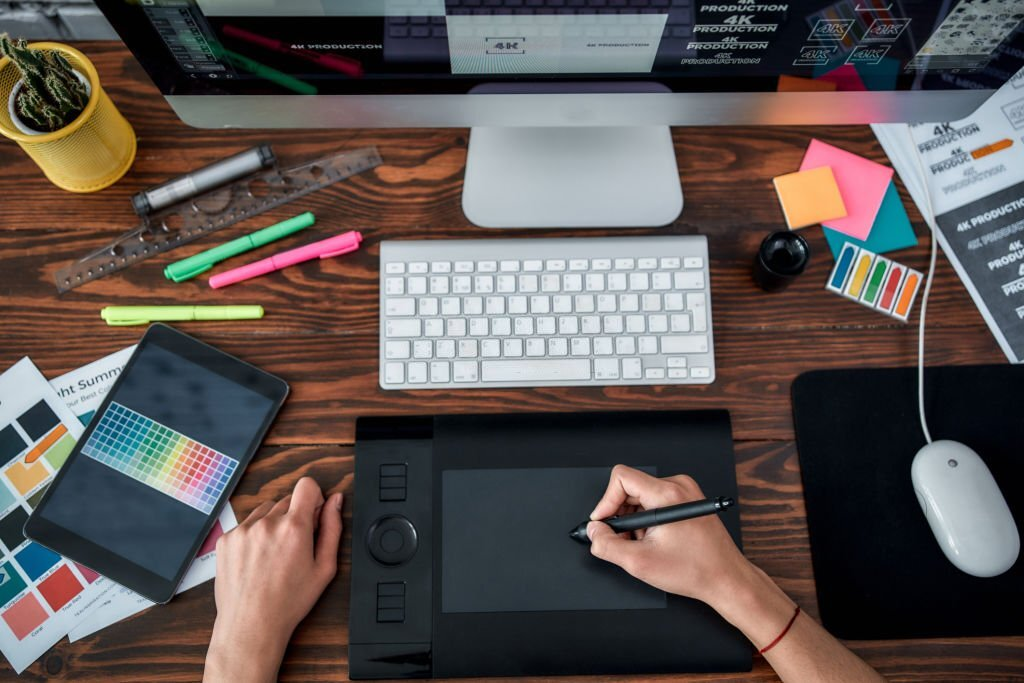In the vast expanse of the digital realm, websites and applications serve as beacons guiding users through oceans of information.
With its compelling visuals and intricate layouts, graphic design is the architect of these beacons.
Yet, as with all architects, there’s an ethical and practical duty to ensure that these structures are accessible to all.
So, how does branding and design agency fit into the crucial conversation of web accessibility? Let’s unravel this.
Design Beyond Aesthetics
Most graphic design evokes images of stunning visuals, brand logos, and interactive web pages.
But beneath its surface lies a world of considerations about how users interact with, understand, and access these designs.
For some users, particularly those with disabilities, navigating the web can be a challenging maze. Here, graphic design is pivotal in facilitating or hindering this experience.
Colors and Contrast
Imagine browsing a website where text seems to melt into the background, making it unreadable.
This is an everyday reality on poorly designed sites for individuals with color vision deficiencies or low vision.
Proper contrast between text and its background isn’t just a design preference—it’s crucial for readability. Designers must ensure color choices cater to everyone, including those with color blindness.
Navigable Designs for Screen Readers
Screen readers, tools employed by visually impaired users, read out web content. They rely on a website’s structure, heading hierarchy, and alternative text descriptions.
When graphic designers prioritize intuitive layouts and incorporate alternative text for images, they significantly boost the website’s accessibility for these users.
The Power of Consistency
Familiarity breeds understanding. When websites maintain a consistent layout—similar navigation menus, button designs, and visual hierarchies—it’s easier for all users, including those with cognitive disabilities, to navigate and understand the site.
Graphic designers make web spaces more welcoming by avoiding erratic designs and ensuring uniformity.
Resizable Text Without Loss of Functionality
Text that scales is text that’s accessible. Users with visual impairments often resize text for better readability.
However, if the design doesn’t support this function, text can overlap, get cut off, or disrupt the page’s entire layout.
Ensuring designs retain their function and aesthetics regardless of text size is crucial for accessibility.
Mindful Animations
Animations can add flair to a website, but they can also pose challenges. For individuals susceptible to seizures, rapidly flashing animations can be hazardous.
For others, they might simply be distracting.
Designers must incorporate options to pause, stop, or hide animations and provide alternatives to motion-based content.
 Beyond the Visual: Inclusive User Experience
Beyond the Visual: Inclusive User Experience
While graphic design leans heavily into visuals, it’s intertwined with the broader realm of user experience (UX).
A truly accessible website embraces both visual design principles and UX design considerations, ensuring that interactive elements, site speed, and navigation structures complement the accessible visual design.
In Conclusion
Accessibility in web design isn’t just a checkbox to tick—it’s a commitment to inclusivity, ensuring that everyone, regardless of their abilities, can access, understand, and interact with digital content.
As the architects of the web, a graphic design agency in Birmingham holds a significant responsibility. Every color choice, layout decision, and animation is either a step towards an inclusive digital world or away from it.
As we move forward, the hope is that every designer, seasoned or novice, embeds accessibility at the core of their creations, crafting stunning and inclusive digital masterpieces.
